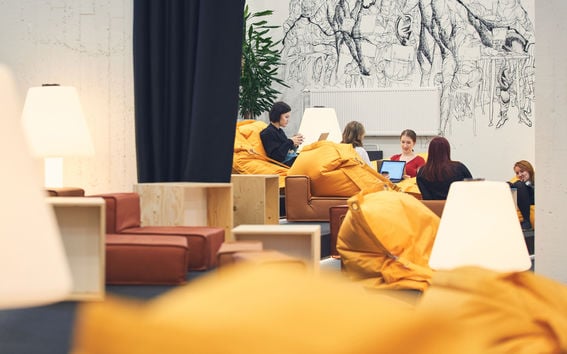Work life in Japan
Mitsubishi Electric's Industrial Design Center is located in Ofuna, about an hour's train ride from Tokyo. Pärssinen lived in the corporate dorm in Fujisawa, a short distance from Ofuna. In addition to the apartment, the employees were offered a daily commute by train.
Japanese work culture surprised the Finnish designer in many ways. For example, the multidisciplinary cooperation, emphasized at Aalto, is not that self-evident in the Mitsubishi organization or in Japanese society. However, at Pärssinen's projects communication worked well.
‘Our team’s business expert realized that the multidisciplinary collaboration we cherished in the small team was beneficial and thus, he thought, in the future, there should actually be an attempt to bring together the views of experts in different fields.’
The pace of work in Pärssinen's projects was mostly dynamic. He also got to follow a slower-pace, cautious development project: The Home Appliances team researched and developed a refrigerator door handle throughout his entire training period, and made numerous versions of it.
Pärssinen says the office life and colleagues were nice. The working days were eight hours and the work was not too hard. One could work freely, take breaks and choose where to sit. There was also a lot of social interaction with the colleagues outside working hours: there always seemed to be a good reason to organize some after work party.
Language difficulties and high hierarchy
An everyday trouble was the language issue. The internship was meant for an ‘international English-speaking intern’, but according to Pärssinen, skills in Japanese would have been beneficial. The language used in meetings and presentations was mostly Japanese, so those not understanding Japanese were always dependent on someone interpreting.
There was also a strong hierarchy in the organization: sometimes it seemed that the work was being done just for the sake of it, and self-initiativeness and questioning were not appreciated or encouraged. The ways of communicating were also quite cautious everywhere, so people didn't dare to express their own ideas, not even in workshops and teams.
‘It was only there that I realized how important cross disciplinary cooperation is’, says Pärssinen.
He appreciates having the opportunity to see what the role of a designer is in a large industrial company, even though it turned out to be a bit tricky one. In the future, Janne Pärssinen is interested in working in a smaller company where his role could be wide and varied.
‘Of course, a designer must always understand the business limitations and the prerequisites for industrial design production. You also have to be a multi-talent with an ability to combine different perspectives.’
Pärssinen has a bachelor's degree in design and this is his final year at the COID master's program. His goal is to graduate during 2020. In the near future, he is interested in working as a designer on a wide spectrum – not just with the door handle of a refrigerator, but also something bigger on the system level.
Also Japan is a place of interest. Pärssinen was able to tour the country with the Japan Rail Pass somewhat, but a lot remained still uncovered.
Founded in 1921, Mitsubishi Electric is a Japanese company that produces electrical products and equipment, industrial automation, household products, communication systems, solar cells and satellites. The company is part of the Mitsubishi Group.
Read more:
Janne Pärssinen second in Helkama cargo bicycle design competition
www.janneparssinen.com




